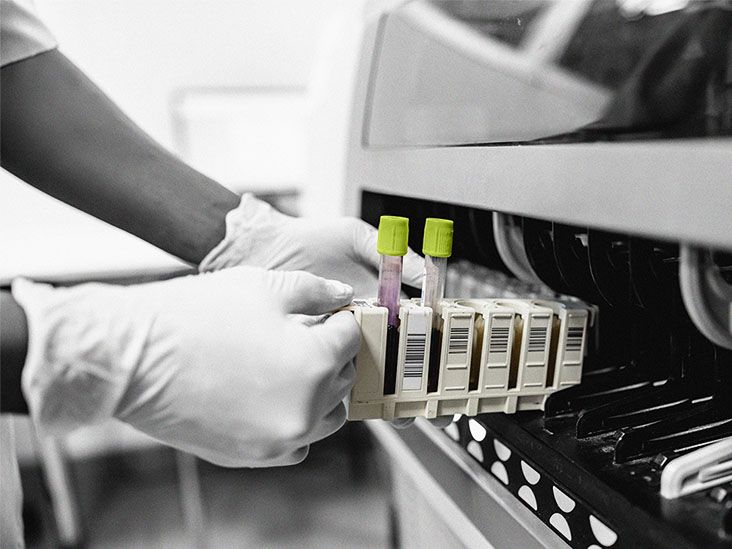Blood
Hemochromatosis testing: Physical exam, blood tests, and more
Doctors may use several tests to help diagnose hemochromatosis. The process may start with a physical exam and blood tests to check a person’s iron levels.
Healthcare professionals use the terms “hemochromatosis” or “iron overload disorder” to refer to conditions that cause a person’s body to store excess iron.
One possible underlying cause involves inherited gene mutations. However, other health conditions can also lead to hemochromatosis.
This article reviews the diagnostic steps and testing doctors use to confirm hemochromatosis. It also provides information about treatment for hemochromatosis and how to help prevent developing complications.
A doctor will often start the diagnostic process with a physical examination of the person.
They may first look for signs of hemochromatosis, which may include:
A person’s symptoms will vary based on the organ system the condition affects the most. Some symptoms often will not present until adulthood, and multiple organs become involved.
A review of someone’s medical history can help doctors diagnose hemochromatosis. Healthcare professionals may ask a person about:
- their family history of the disorder, diabetes, or cirrhosis
- any symptoms a person has experienced or is currently experiencing
- the presence of other health conditions that may be hemochromatosis complications, such as arthritis or diabetes
Genes can play a role in the development of hemochromatosis. The Centers for Disease Control and Prevention (CDC) notes that most cases of hereditary hemochromatosis occur due to certain variants in the HFE gene.
Evidence suggests that the presence of mutations C282Y and H63D can confirm diagnosis in about 90% of all cases.
Once a person receives a hereditary hemochromatosis diagnosis, a doctor may recommend any direct relative, such as a sibling, has genetic screening.
Radiography refers to a form of imaging test that uses X-rays.
A doctor may order radiography imaging of different organs, such as the heart, to determine whether hemochromatosis has caused any damage to these organs.
They may also order other types of imaging tests, such as MRI scans and echocardiograms.
A liver biopsy can provide accurate information about the iron levels in a person’s liver. It can also help doctors assess the level of liver damage hemochromatosis may have caused.
The procedure involves a healthcare professional taking a small sample of tissue from the liver for laboratory testing.
There are two main reasons a doctor may order a liver biopsy. The first situation involves the presence of elevated liver enzymes, which may appear via blood tests for hemochromatosis. The second involves blood ferritin levels greater than 1,000 mcg/L.
Most doctors recommend regular phlebotomies to treat hemochromatosis. A phlebotomy involves a healthcare professional drawing about one pint of blood from a person. The process is a generally safe and effective way to reduce the amount of iron in a person’s body.
Drawing blood on a regular schedule may help reduce symptom severity and prevent complications from occurring. Schedules can vary, but doctors often recommend phlebotomy once or twice a week for several months.
They will also order blood tests to monitor a person’s blood iron levels.
Anyone who receives blood transfusions to treat some forms of anemia and develops secondary hemochromatosis cannot receive phlebotomies. Instead, doctors will often prescribe chelating agents. This type of medication binds to iron and allows the body to pass it through urine.
Treatment of neonatal hemochromatosis often involves exchange transfusions and intravenous (IV) immunoglobulin. Exchange transfusions remove and replace some of the infant’s blood with blood from a donor. IV immunoglobulin treatment helps increase the infant’s antibody levels.
If severe liver damage occurs in a newborn, a liver transplant may be necessary. A living caregiver may be able to donate a small portion of their liver for this procedure.
Additionally, adults may need a liver transplant to treat some complications of hemochromatosis, such as liver cancer or liver failure.
A person can take some steps to help prevent complications of hemochromatosis:
- undergoing liver biopsy to check for cirrhosis
- following the schedule for phlebotomies or chelation therapy as a doctor advises
- undergoing annual blood tests to check iron levels
- making changes to diet, such as avoiding vitamin C supplements, iron supplements, and multivitamins
- learning how to prevent infections — for example, by receiving any vaccinations a doctor recommends and thoroughly cooking fish and shellfish before consumption
- avoiding alcohol consumption
Hemochromatosis testing may involve diagnostic procedures, such as radiography, blood tests, genetic testing, and liver biopsy. A doctor will likely review a person’s medical history and conduct a physical examination before ordering other diagnostic tests.
During hemochromatosis diagnosis, healthcare professionals may also identify complications of the condition, such as damage to the liver.
Treatment options may vary depending on each individual’s circumstances. For example, some people may undergo regular phlebotomies, whereas others may require chelation therapy.
Doctors may recommend that a person make some lifestyle changes and follow treatment schedules to help prevent hemochromatosis complications and reduce symptom severity.

